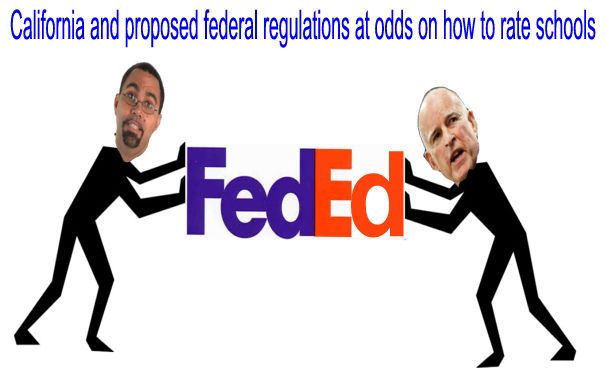Proposed federal, state accountability systems could again clash
Differences in proposed federal and state criteria for intervening in the lowest-performing schools could lead to what California education officials have insisted they want to avoid: two conflicting school improvement systems.
The Legislature required and the California State Board of Education is designing a multidimensional school accountability system that will incorporate measures of school climate and students’ readiness for college and careers. But, according to a new analysis, proposed federal regulations would, in effect, prohibit states from using these and other indicators to determine which schools receiving federal aid require intensive state assistance.
It would be an echo of the decade under the former No Child Left Behind Act, when most California schools gradually improved under the state’s Academic Performance Index, or API, but at the same time fell farther behind under the federal government’s rising proficiency targets under NCLB. The mixed signals confounded educators and parents alike.
Heather Hough, a researcher affiliated with Policy Analysis for California Education, or PACE, a Stanford University-based nonprofit, led the data analysis, which was released Monday, the last day for submitting comments to the U.S. Department of Education on the proposed regulations for the Every Student Succeeds Act, which is replacing NCLB. The 21-page report supports complaints by education officials from California and other states that regulations would be more restrictive than Congress intended in passing the new federal law. Hough is the executive director of a research partnership between PACE and the six California districts, known as CORE, that have independently created their own school accountability system. The partnering organizations used CORE Proposed federal, state accountability systems could again clash | EdSource:

